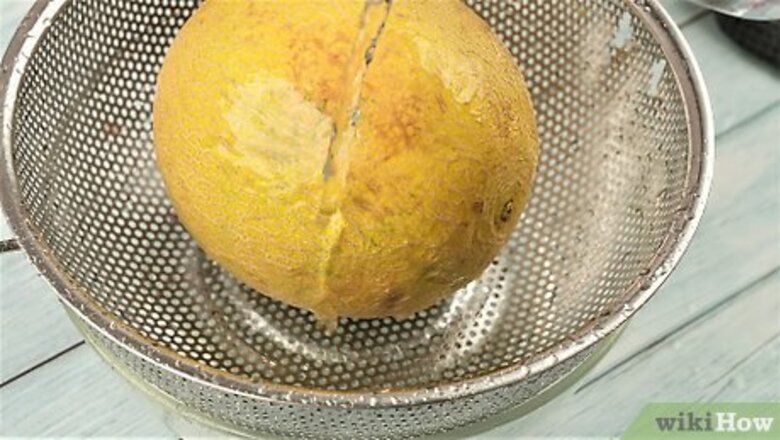
views
Serving Cantaloupe Wedges
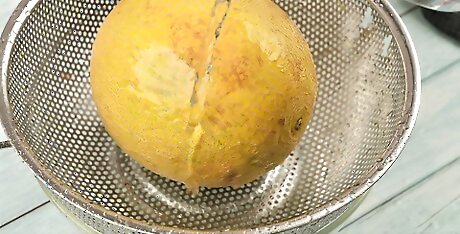
Wash and scrub the cantaloupe. Place the cantaloupe under running water and use a vegetable brush to scrub the entire surface. Because these melons grow on the ground, they do sometimes carry food-borne pathogens like salmonella, so washing is very important.It's not necessary or recommended to wash any fruits or vegetables with soap or detergent. Clean water and a good scrubbing will safely remove dirt and pathogens from the cantaloupe.
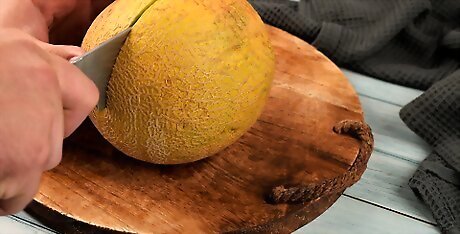
Cut the melon in half. Place the melon on a cutting board or durable flat surface. Hold the melon steady and carefully cut it in half, through the middle, with a sharp knife. It's not necessary to remove the skin from a cantaloupe before cutting it. Cantaloupe rind isn't edible, but when you cut the fruit into hand-held wedges, you can eat the fruit right off the rind.
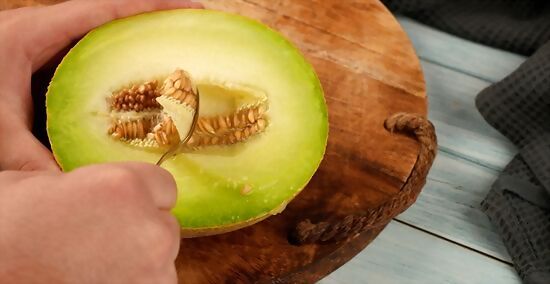
Scoop out the seeds. Place the melon halves so the cut sides are facing upward. Use a spoon to scrape out the seeds from the center of each half. Take care to remove as little fruit with the seeds as possible, because that's where you'll find the juiciest and sweetest flesh.Discard the seeds into a compost bin or garbage once they've been removed, or clean them and roast them like pumpkin seeds for a delicious and nutritious snack.
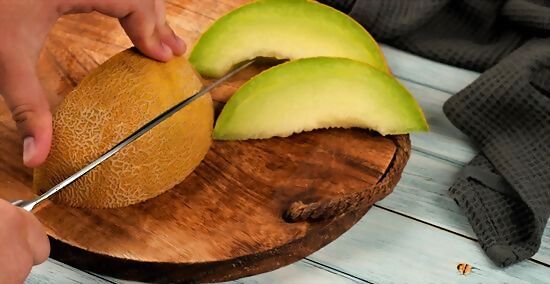
Cut each half into wedges. Turn the melon halves over so they're cut-side down on the cutting board. Cut each half in half again to form large quarter wedges. Carefully cut each of those wedges in half again (lengthwise) to form eight small wedges. For a very small snack or to feed lots of people, cut each wedge in half again for a total of 16 wedges.
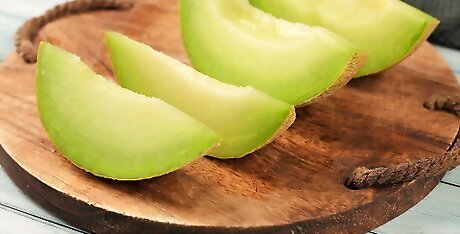
Serve the wedges on the rind. Once the wedges are cut, you can serve them as is to be eaten as hand-held snacks. To eat cantaloupe like this, hold a wedge by the rind and eat the fruit from the rind by taking small bites. Don't eat the greenish flesh touching the rind. Discard the rind when there's no orange fruit left on it.
Chopping Cantaloupe into Chunks
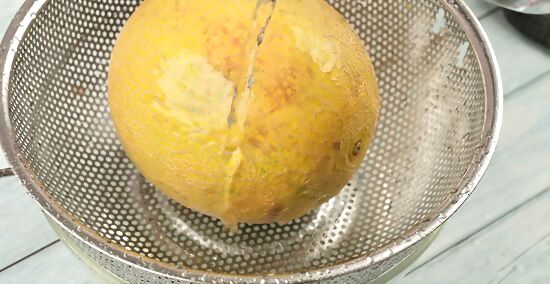
Scrub the cantaloupe. Rinse the melon under running water and scrub it thoroughly with a vegetable brush. This will remove dirt and pathogens from the skin, and prevent food-borne illnesses.

Trim off the top and bottom. Lay the cantaloupe on its side on a cutting board. Hold the melon steady and trim half an inch (1.3 cm) from the top and bottom to remove the stem scars. This will also give you a flat surface to rest the cantaloupe on, and make peeling the rind easier.

Peel off the rind. Turn the cantaloupe and stand it on the flat top that you just cut. With a sharp knife, carefully cut from top to bottom to remove strips of rind from the melon, following the rounded contour of the fruit. Turn the melon and continue cutting until you've removed all the rind. Then go around again and cut off any leftover green sections. As you peel the rind and green flesh from the cantaloupe, try to preserve as much of the edible orange flesh as possible.
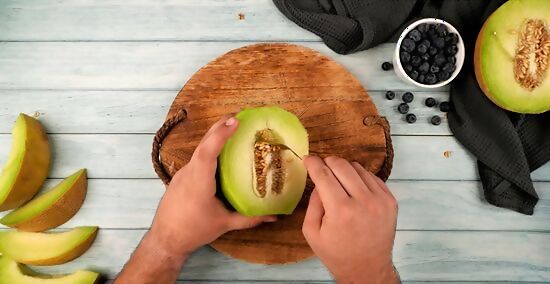
Remove the seeds. Once the rind and green have been cut from the melon, cut the cantaloupe in half through the center. Place the halves cut-side up on a flat surface. Use a spoon to scoop out the seeds from the center, but don't scoop out the sweet and juicy orange flesh. The seeds can either be discarded into a compost bin or cleaned and roasted like pumpkin seeds.
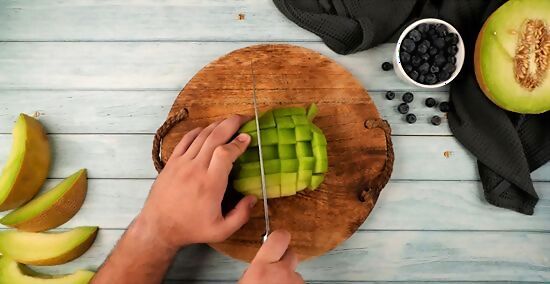
Chop the cantaloupe into small chunks. Turn the cantaloupe halves over so they're cut-side down on the cutting board. Cut each halve into 1-inch (2.5-cm) strips. Then cut those strips widthwise to form 1-inch (2.5-cm) cantaloupe cubes. Once the cubes are cut, you can eat them alone with your fingers or a fork, turn them into other treats, or add them to your favorite foods.
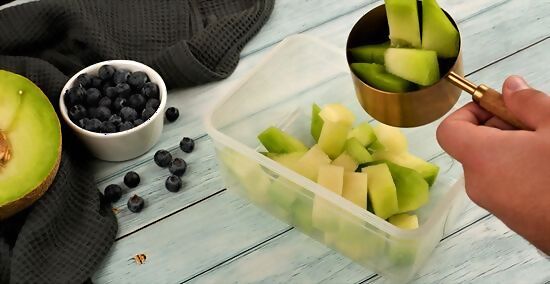
Store leftovers. Transfer any leftover cantaloupe chunks to an airtight container. Store them in the refrigerator for about three days. For longer storage, keep the cantaloupe in the freezer for up to a year.
Enjoying Cantaloupe

Eat it plain or with other fruit. Cantaloupe is a delicious, sweet, and juicy fruit that you can eat in wedge or chunk form. You can also cut chunks of cantaloupe and add them to a cocktail with other favorite fruits. You can pair cantaloupe with any fruit you like, and some popular additions include: Blueberries, strawberries, and blackberries Bananas Pineapple and mango Honeydew and watermelon Peaches Kiwi
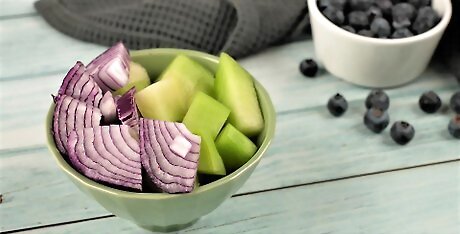
Toss it into a salad. Cantaloupe can also be eaten with green salads, and it pairs well with a variety of vegetables and lettuce types. You can either add cantaloupe to any of your favorite salads, or make a cantaloupe salad by combining: Chunks of cantaloupe Sliced cucumber Diced red onion Toasted sesame seeds A drizzle of olive oil and rice vinegar Salt and pepper, to taste
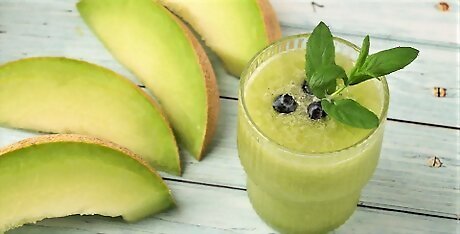
Blend it into a smoothie. Because melons are so juicy, they're great in smoothies. Throw chunks of cantaloupe into a blender with other fruit and whiz it up to make a delicious drink. For a refreshing summer smoothie, add a few ice cubes as well. To make a more filling breakfast smoothie, add: Dairy or non-dairy milk or yogurt Nuts Hemp hearts or other seeds Protein powder
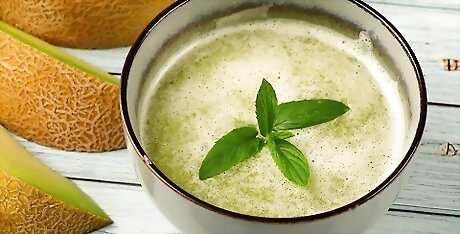
Try melon soup. Melon or cantaloupe soup is a delicious soup that's ideal as an appetizer for warm summer nights, because it's served chilled. You can also whip up large batches and bring it for picnics, barbecues, and potlucks.
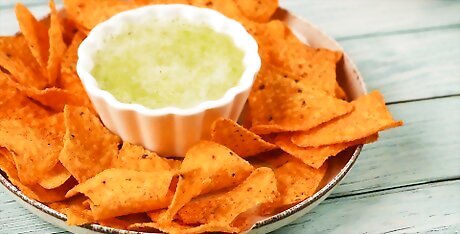
Turn it into salsa. You've probably tried tomato salsa before, and may have even dipped a chip into a pineapple or mango salsa, but you can also make a tasty salsa with cantaloupe. It's a delicious condiment or dip that you can eat with: Tacos Burgers Hot dogs Nachos Fish




















Comments
0 comment